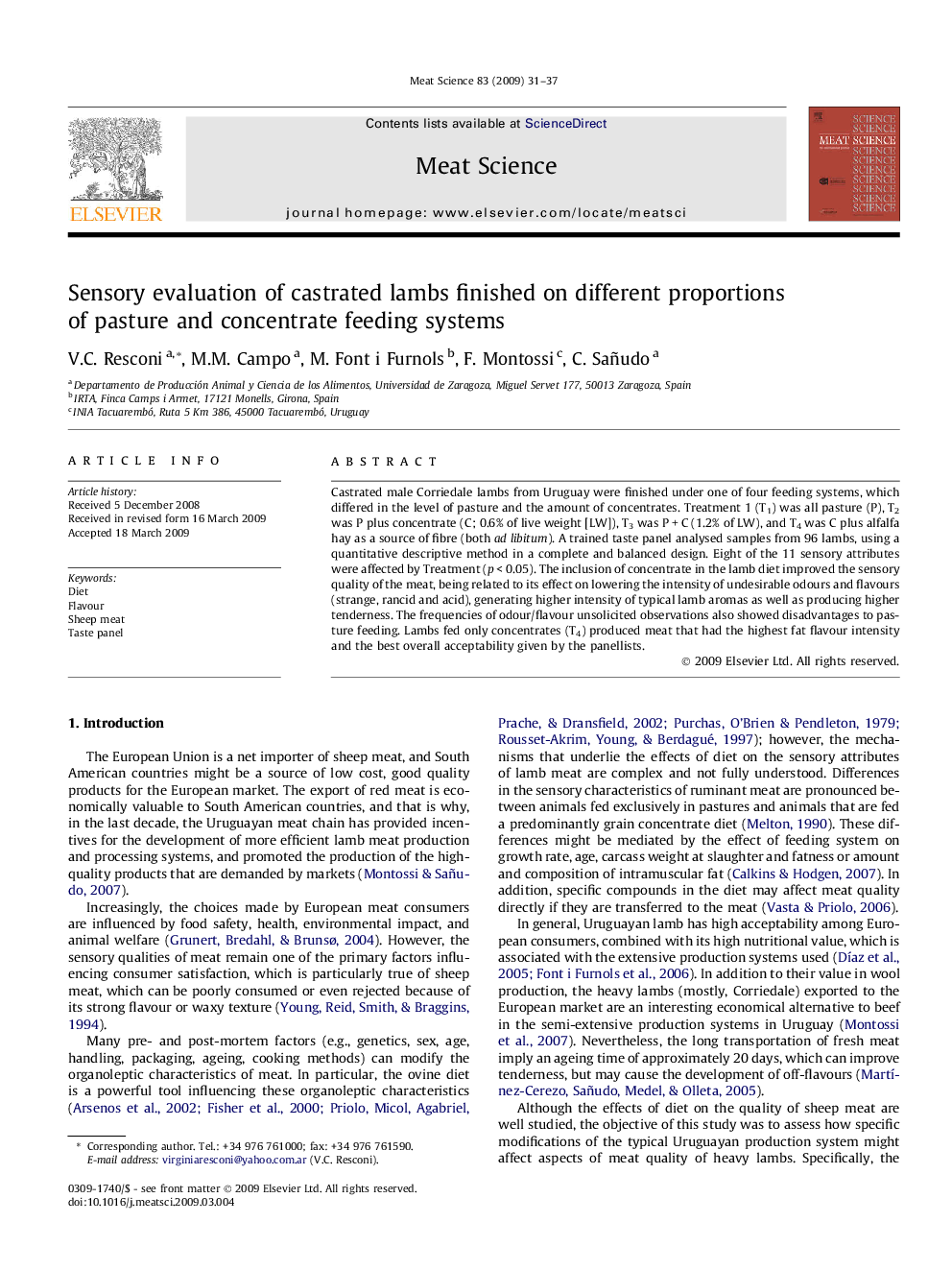| Article ID | Journal | Published Year | Pages | File Type |
|---|---|---|---|---|
| 2450903 | Meat Science | 2009 | 7 Pages |
Castrated male Corriedale lambs from Uruguay were finished under one of four feeding systems, which differed in the level of pasture and the amount of concentrates. Treatment 1 (T1) was all pasture (P), T2 was P plus concentrate (C; 0.6% of live weight [LW]), T3 was P + C (1.2% of LW), and T4 was C plus alfalfa hay as a source of fibre (both ad libitum). A trained taste panel analysed samples from 96 lambs, using a quantitative descriptive method in a complete and balanced design. Eight of the 11 sensory attributes were affected by Treatment (p < 0.05). The inclusion of concentrate in the lamb diet improved the sensory quality of the meat, being related to its effect on lowering the intensity of undesirable odours and flavours (strange, rancid and acid), generating higher intensity of typical lamb aromas as well as producing higher tenderness. The frequencies of odour/flavour unsolicited observations also showed disadvantages to pasture feeding. Lambs fed only concentrates (T4) produced meat that had the highest fat flavour intensity and the best overall acceptability given by the panellists.
